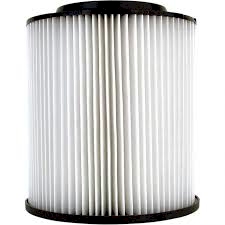HEPA Filters – High-efficiency particulate air (HEPA), also known as high-efficiency particulate absorbing and high-efficiency particulate arrestance, is an efficiency standard of air filter.
Filters meeting the HEPA standard must satisfy certain levels of efficiency. Common standards require that a HEPA air filter must remove—from the air that passes through—at least 99.95% (European Standard) or 99.97% (ASME, U.S. DOE) of particles whose diameter is greater than or equal to 0.3 µm. See the Specifications section for more information.
HEPA was commercialized in the 1950s, and the original term became a registered trademark and later a generic term for highly efficient filters. HEPA filters are used in applications that require contamination control, such as the manufacturing of disk drives, medical devices, semiconductors, nuclear, food and pharmaceutical products, as well as in hospitals, homes and vehicles.

HEPA Filters
HEPA filters are composed of a mat of randomly arranged fibres. The fibers are typically composed of fiberglass and possess diameters between 0.5 and 2.0 micrometers. Key factors affecting its functions are fiber diameter, filter thickness, and face velocity. The air space between HEPA filter fibers is typically much greater than 0.3 μm. The common assumption that HEPA filters act like a sieve where particles smaller than the largest opening can pass through is incorrect and impractical. Unlike membrane filters at this pore size, where particles as wide as the largest opening or distance between fibers can not pass in between them at all, HEPA filters are designed to target much smaller pollutants and particles. These particles are trapped (they stick to a fiber) through a combination of the following three mechanisms:
Diffusion
An enhancing mechanism that is a result of the collision with gas molecules by the smallest particles, especially those below 0.1 µm in diameter, which are thereby impeded and delayed in their path through the filter; this behavior is similar to Brownian motion and raises the probability that a particle will be stopped by either interception or impaction; this mechanism becomes dominant at lower air flow.
Interception
Particles following a line of flow in the air stream come within one radius of a fiber and adhere to it.
Impaction
Larger particles are unable to avoid fibers by following the curving contours of the air stream and are forced to embed in one of them directly; this effect increases with diminishing fiber separation and higher air flow velocity.
Diffusion predominates below the 0.1 μm diameter particle size, whilst impaction and interception predominate above 0.4 μm. In between, near the most penetrating particle size (MPPS) 0.21 μm, both diffusion and interception are comparatively inefficient. Because this is the weakest point in the filter’s performance, the HEPA specifications use the retention of particles near this size (0.3 μm) to classify the filter. However it is possible for particles smaller than the MPPS to not have filtering efficiency greater than that of the MPPS. This is due to the fact that these particles can act as nucleation sites for mostly condensation and form particles near the MPPS.
Gas filtration
HEPA filters are designed to arrest very fine particles effectively, but they do not filter out gasses and odor molecules. Circumstances requiring filtration of volatile organic compounds, chemical vapors, cigarette, pet, and/or flatulence odors call for the use of an activated carbon (charcoal) or other type of filter instead of or in addition to a HEPA filter. Carbon cloth filters, claimed to be many times more efficient than the granular activated carbon form at adsorption of gaseous pollutants, are known as HEGA filters (“High Efficiency Gas Adsorption”) and were originally developed by the British military as a defense against chemical warfare.
Pre-filter and HEPA Filter
A HEPA filter can be used in conjunction with a pre-filter (usually carbon-activated) to extend the usage life of the more expensive HEPA filter. In such setup, the first stage in the filtration process is made up of a pre-filter which removes most of the larger dust, hair, PM10 and pollen particles from the air. The second stage high-quality HEPA filter, which filters out the finer particles that escapes from the pre-filter.
More at the source of this article.
If you need HEPA filters for your business touch base with us for pricing. Call us on 09 520 20 30 or use our contact form here.
